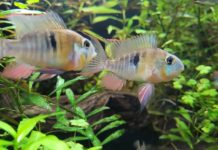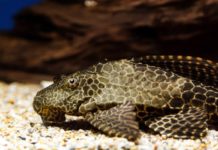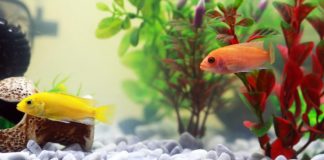Contents
- How To Get Rid Off White Sponges In A Reef Tank
- Why You Should Avoid Scraping It Off
- Exposing White Sponges To Air
- The Flow Is Too Low
- Increase The Lighting
- Using Fish & Invertebrates
How To Get Rid Off White Sponges In A Reef Tank
If you’re looking to get rid of white sponges in your reef tank, you’ve come to the right place! While white sponges can be beneficial for a reef tank, some aquarists actually attempt to add them to the tank, although these sponges have a habit of overgrowing coral and clogging up filtration systems down the road.
Some of the best ways to get rid of white sponges are to expose them to air, limit their food source, turn down the water flow, brighten the tank, introduce sea life that feeds on them, or use hydrogen peroxide.
Why You Should Avoid Scraping It Off
Before getting into some of the ways to take care of a white sponge problem that can plague a reef tank, it’s important to address the number one mistake that many tank owners make is manual removal. It’s important to know that this is one of the worst things you can do!
You should know that scraping white sponges off of your tank’s walls or rocks is only a temporary solution. It may make your reef tank look better for a few days, however, the white sponges are capable of growing from the smallest particle. By scraping the white sponge into pieces, you’re actually causing it to spread, making the problem worse.
Exposing White Sponges To Air
The good news with this method is that you don’t have to do anything different. White sponges need food to be smaller than half a micrometer in size, which is extremely small. Even the smallest food within a tank is usually 4 times that size.
White sponges aren’t designed to survive within a reef tank ecosystem, so they should eventually die out on their own over time.
The Flow Is Too Low
On that note, this method of removal is especially effective in conjunction with limited food. White sponges need a higher flow of water to pull food to them, so if you can turn down the air current in your tank without hurting other life, go ahead and do it.
This actually works in three ways as, on top of the feeding, the circulation of the water draws waste away, preventing bacterial infections that can kill off the white sponge. To make matters worse for the white sponge, though, the lack of significant water flow can overwork them to death.
Collar cells in white sponges rely on water flow to help shape and grow the white sponge, so without proper water flow, these cells are left to do it all alone. In a lot of cases, this puts too much strain on the cells and the white sponge will die.
Increase The Lighting
A common misconception is the better the lighting is, will kill off white sponges. However, in reality, this situation perhaps created the problem in the first place. When a reef tank is well lit, it attracts more and more growth of algae. Generally, algae are harmless and is actually a good food source for many organisms within a reef tank.
However, another benefit of having algae within a reef tank is how it counteracts white sponges. Algae begins to gather on white sponges until the white sponge is eventually overgrown with algae. When this happens, it can have negative effects on the white sponge until it dies.
The overgrowth of algae will restrict the water flow, preventing the white sponge from feeding, both of which are surefire ways to kill off the white sponge if you recall earlier methods of removal. If the reef tank can handle it, go ahead and brighten things up.
Using Fish & Invertebrates
Unfortunately, most reef fish can’t or won’t eat white sponges. The reason is that white sponges simply lack the nutritional value and don’t interest the majority of fish. However, if your tank has the right conditions, there are a number of sponge predators out there.
Angel Fish
The number one feeder on white sponges is the angelfish, whose diet typically contains at least 70 percent sponges. The biggest drawback to owning angelfish is that they will also completely destroy any coral in a reef tank, so it really depends on what else is in your reef tank and how badly you want the white sponge gone.
There’re a few other options, like filefish or triggerfish, although two angelfish would accomplish the task the best. It’s recommended to do your research on which type of angelfish could be compatible with the rest of your reef tank, as they can seriously wreak havoc on corals.
Invertebrates
While angelfish can prey primarily on sponges, they’re not ideal for a reef tank, so there is another option by using invertebrates. There’re a number of nudibranchs, crabs, and snails that specifically eat sponges, so check to see if any of these invertebrates would work.
Sea stars and pencil urchins are also known to feed on sponges, so there’re a few options to consider helping to remove the white sponge problem. Just be careful, as crabs can sometimes eat coral as well.








